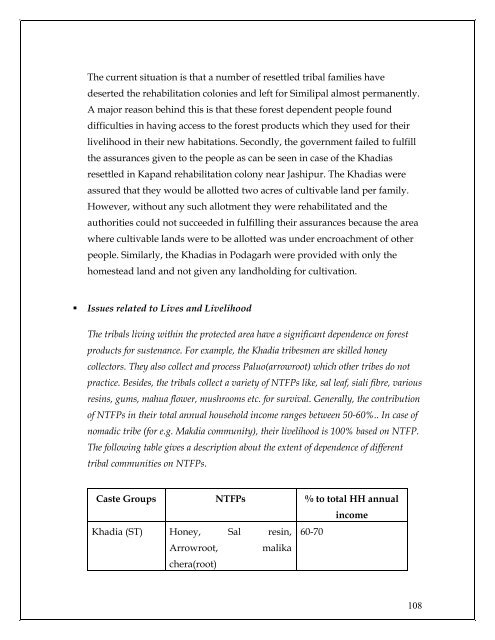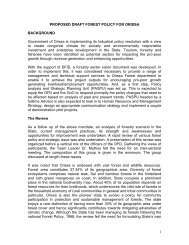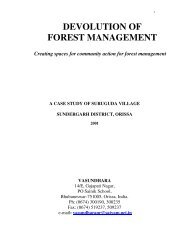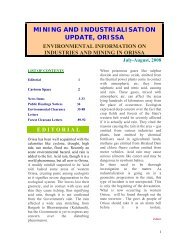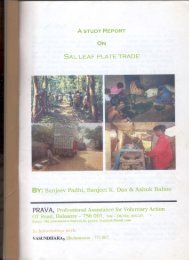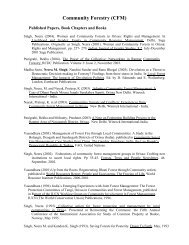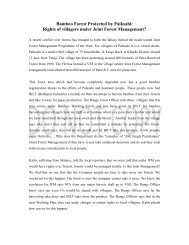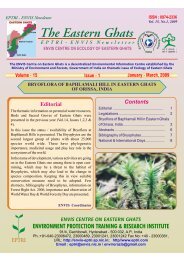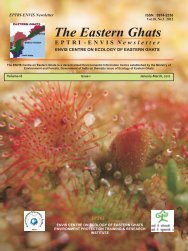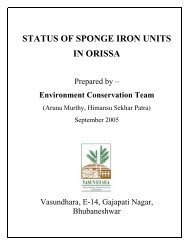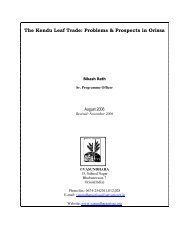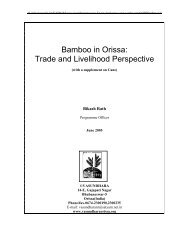Protected Area Network in Orissa - Vasundhara
Protected Area Network in Orissa - Vasundhara
Protected Area Network in Orissa - Vasundhara
- No tags were found...
Create successful ePaper yourself
Turn your PDF publications into a flip-book with our unique Google optimized e-Paper software.
The current situation is that a number of resettled tribal families havedeserted the rehabilitation colonies and left for Similipal almost permanently.A major reason beh<strong>in</strong>d this is that these forest dependent people founddifficulties <strong>in</strong> hav<strong>in</strong>g access to the forest products which they used for theirlivelihood <strong>in</strong> their new habitations. Secondly, the government failed to fulfillthe assurances given to the people as can be seen <strong>in</strong> case of the Khadiasresettled <strong>in</strong> Kapand rehabilitation colony near Jashipur. The Khadias wereassured that they would be allotted two acres of cultivable land per family.However, without any such allotment they were rehabilitated and theauthorities could not succeeded <strong>in</strong> fulfill<strong>in</strong>g their assurances because the areawhere cultivable lands were to be allotted was under encroachment of otherpeople. Similarly, the Khadias <strong>in</strong> Podagarh were provided with only thehomestead land and not given any landhold<strong>in</strong>g for cultivation.• Issues related to Lives and LivelihoodThe tribals liv<strong>in</strong>g with<strong>in</strong> the protected area have a significant dependence on forestproducts for sustenance. For example, the Khadia tribesmen are skilled honeycollectors. They also collect and process Paluo(arrowroot) which other tribes do notpractice. Besides, the tribals collect a variety of NTFPs like, sal leaf, siali fibre, variousres<strong>in</strong>s, gums, mahua flower, mushrooms etc. for survival. Generally, the contributionof NTFPs <strong>in</strong> their total annual household <strong>in</strong>come ranges between 50-60%.. In case ofnomadic tribe (for e.g. Makdia community), their livelihood is 100% based on NTFP.The follow<strong>in</strong>g table gives a description about the extent of dependence of differenttribal communities on NTFPs.Caste Groups NTFPs % to total HH annual<strong>in</strong>comeKhadia (ST) Honey, Sal res<strong>in</strong>, 60-70Arrowroot, malikachera(root)108


